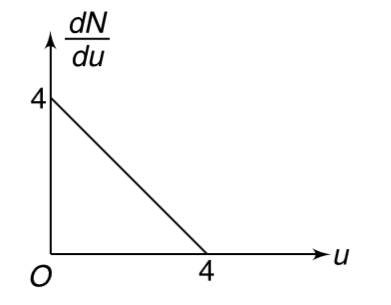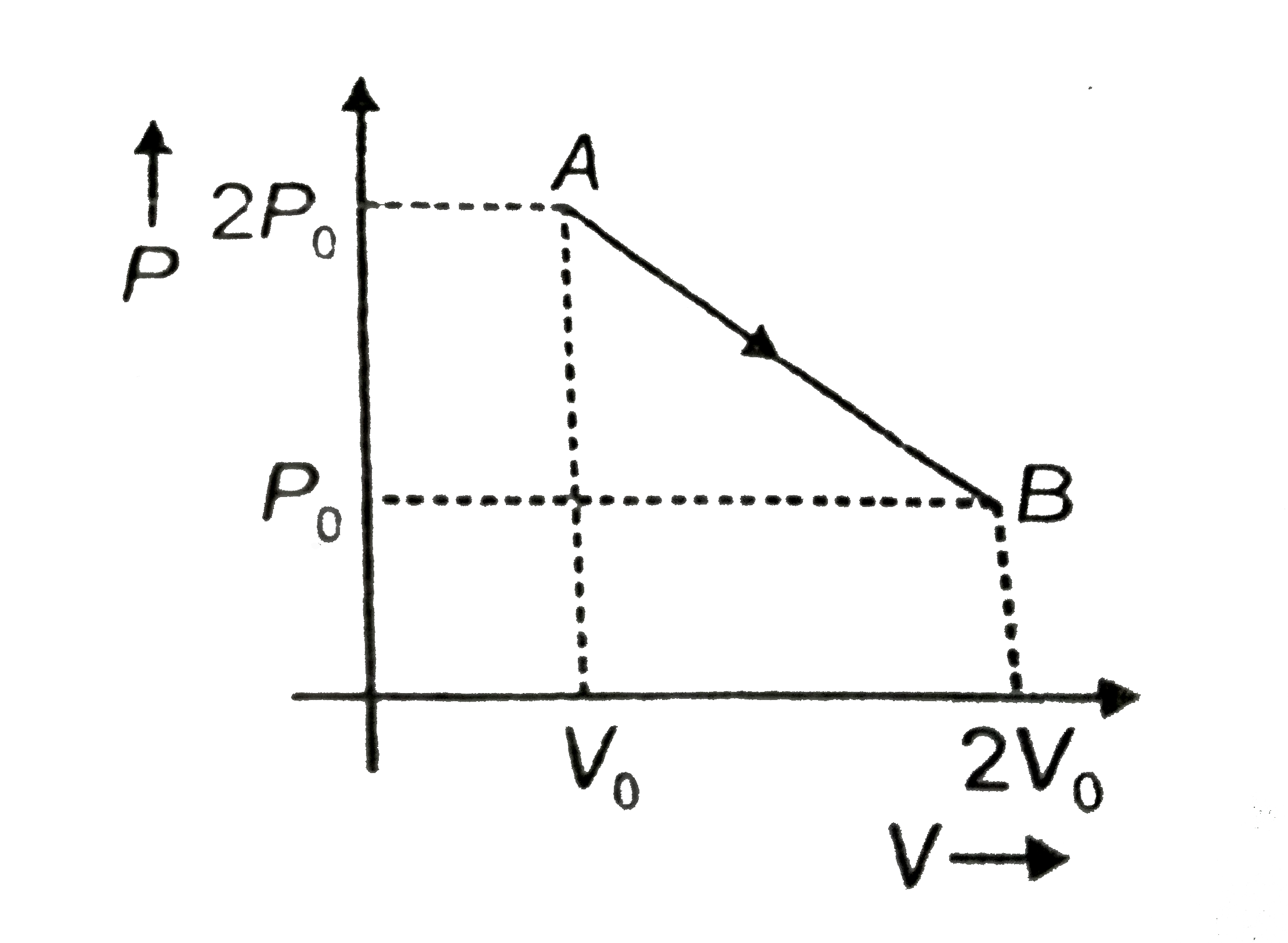The average molecular speed is gretest in which of the following gas samples?
1.0molN2 at 560K
0.50mol of Ne at 500K
0.20mol of CO2 at 440K
2.0mol of He at 140K
To determine which gas sample has the greatest average molecular speed, we can follow these steps:
Step 1: Understand the Formula for Average Molecular Speed
The average molecular speed (V) of a gas can be calculated using the formula:
V=√8RTπm
Where:
- R is the universal gas constant,
- T is the absolute temperature in Kelvin,
- m is the molar mass of the gas.
Step 2: Identify the Relationship Between Speed and Molar Mass
From the formula, we can see that the average molecular speed is inversely proportional to the square root of the molar mass (m). This means:
V∝1√m
Thus, a smaller molar mass results in a greater average molecular speed.
Step 3: List the Molar Masses of the Given Gases
Now, let's find the molar masses of the gases provided in the options:
- Nitrogen (N2): Molar mass = 28 g/mol
- Neon (Ne): Molar mass = 20 g/mol
- Carbon Dioxide (CO2): Molar mass = 44 g/mol
- Helium (He): Molar mass = 4 g/mol
Step 4: Compare the Molar Masses
Now we compare the molar masses:
- N2 = 28 g/mol
- Ne = 20 g/mol
- CO2 = 44 g/mol
- He = 4 g/mol
Step 5: Determine the Gas with the Lowest Molar Mass
Among the gases listed, Helium (He) has the lowest molar mass of 4 g/mol.
Step 6: Conclusion
Since the average molecular speed is greatest for the gas with the lowest molar mass, we conclude that Helium (He) has the greatest average molecular speed.
Final Answer
The gas sample with the greatest average molecular speed is Helium (He).
---
The average molecular speed (V) of a gas can be calculated using the formula:
V=√8RTπm
Where:
- R is the universal gas constant,
- T is the absolute temperature in Kelvin,
- m is the molar mass of the gas.
From the formula, we can see that the average molecular speed is inversely proportional to the square root of the molar mass (m). This means:
V∝1√m
Thus, a smaller molar mass results in a greater average molecular speed.
Now, let's find the molar masses of the gases provided in the options:
- Nitrogen (N2): Molar mass = 28 g/mol
- Neon (Ne): Molar mass = 20 g/mol
- Carbon Dioxide (CO2): Molar mass = 44 g/mol
- Helium (He): Molar mass = 4 g/mol
Now we compare the molar masses:
- N2 = 28 g/mol
- Ne = 20 g/mol
- CO2 = 44 g/mol
- He = 4 g/mol
Among the gases listed, Helium (He) has the lowest molar mass of 4 g/mol.
Since the average molecular speed is greatest for the gas with the lowest molar mass, we conclude that Helium (He) has the greatest average molecular speed.
The gas sample with the greatest average molecular speed is Helium (He).
Topper's Solved these Questions
- STATES OF MATTERBOOK - CENGAGE CHEMISTRY ENGLISHCHAPTER - STATES OF MATTEREXERCISE - Exercises (Assertion-Reasoning)
24 Videos
- STATES OF MATTERBOOK - CENGAGE CHEMISTRY ENGLISHCHAPTER - STATES OF MATTEREXERCISE - Exercises (Integer)
10 Videos
- STATES OF MATTERBOOK - CENGAGE CHEMISTRY ENGLISHCHAPTER - STATES OF MATTEREXERCISE - Exercises (Multiple Correcttype)
32 Videos
- SOME BASIC CONCEPTS AND MOLE CONCEPTBOOK - CENGAGE CHEMISTRY ENGLISHCHAPTER - SOME BASIC CONCEPTS AND MOLE CONCEPTEXERCISE - Archives Subjective
11 Videos
- STOICHIOMETRYBOOK - CENGAGE CHEMISTRY ENGLISHCHAPTER - STOICHIOMETRYEXERCISE - Archives Subjective
33 Videos
Similar Questions
A flat plate is moving normal to its plane through a gas under the action of a constant force F. The gas is kept at a very low pressure. The speed of the plate v is much less than the average speed u of the gas molecules. Which of the following options is/are true ?
View SolutionA sample of gas follow process represented by PV2 = constant . Bulk modulus for this process is B, then which of the following graph is correct ?
View Solution
Knowledge Check
A sample of an ideal gas is heated doubling its absolute temperature . Which of the following statements best describes the result of heating the gas?
AThe root-mean-square speed of gas molecules doubles.BThe average kinetic energy of the gas molecules increases by a factor of √2.CThe average kinetic energy of the gas molecules increases by a factor of 4.DThe speeds of the gas molecules cover a wide range, bu the root-man-square speed increases by a factor of √2.The gas mileage for Jan's car is 28 miles per gallon when the car travels at an average speed of 55 miles per hour. The car's gas tank has 20 gallons of gas at the beginning of a trip. If Jan drives at an average speed of 55 miles per hour, Which of the following functions f models the number of gallons of gas remaining in the tank t hours after the trip begins ?
Af(t)=20−2855tBf(t)=20−55t28Cf(t)=20−28t55Df(t)=20−55t28
What is the average molecular mass of drugs ?
View SolutionIf we increase temperature of a gas sample, which of the following is true?
View SolutionDraw the molecular structures of the following :
(a) Noble gas species which is isostructural with BrO−3
(b) Dibasic oxoacid of phosphorus
View Solutionvrms,vav and vmp are root mean square average and most probable speeds of molecules of a gas obeying Maxwellian velocity distribution. Which of the following statements is correct ?
View SolutionA hypothetical gas sample has its molecular speed distribution graph as shown in the figure. The speed (u) and dNdu have appropriate units. Find the root mean square speed of the molecules. Do not worry about units.

View SolutionA sample of gas follows process AB, then which of the following is incorrect about AB?

View Solution
